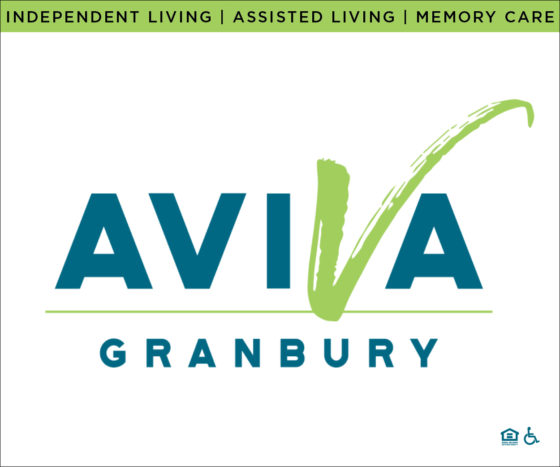Dear Ken Keller,
I hired a new employee to work for my company. All was well, I thought, until several weeks later when he failed to show up for work. Concerned, I called and asked if he was okay.
The new employee told me that he quit. He said he did this because he was being hassled by other employees. I asked him to tell me who had been giving him a bad time and he refused saying that, in the end, telling me who was hassling him would not matter. In his mind, it was going to boil down to believing the word of long time employees, or him.
Based on that, he made the decision to simply quit.
I interviewed the employees involved. All said that no harassment took place. I chose not to pursue the matter. What am I missing here?
Robert K.
Dear Robert,
I believe you are missing that your company has turned into what the law in your state defines as a “hostile work environment.”
When someone in your employ, regardless of tenure or position, feels so threatened that they prefer to walk away from a paying job because of the environment created by fellow employees, action is way past due.
You need to retain an experienced employment attorney to conduct an investigation into what took place. That attorney can recommend a course of action to address what happened to your former employee and can create policies, procedures and training so that this kind of situation does not take place again.
Just because you have not heard from this former employee doesn’t mean that this is resolved. There may be a legal case against you and your company. If the harassment was sexual in nature and was perpetrated by supervisors, those individuals may be personally liable. You should be prepared for adverse legal action, which an experienced employment attorney can proactively address.
Dear Ken Keller,
For many years we have contracted with a Certified Public Accounting firm focused on minimizing our tax liability.
At this stage of growth, there might be other CPA firms that could do more of what we need.
The partner handling our account is a long-time friend. After so many years I am already dreading having a conversation; even sending an email to set it up makes my palms sweaty. What are your thoughts about this?
Tom F.
Dear Tom,
It’s a good business practice to review what your needs are today and what you will need in the future with any vendor. Be proactive and do this first with your CPA firm.
You’ve identified areas your company may need assistance but you don’t know if your current CPA firm can provide those services or not. You can only learn this when you hold a conversation about where your company has been, where it is and where it is going.
To prepare, create a list of what you are currently paying for, what you are charged, and how you rate delivery of 0those services (1 to 10, 10 being the highest). Then, list the additional services desired in the future, and rank them “must have” or “nice to have.”
Be open; share your assessments with your CPA.
Your CPA will do everything they can to retain your business, but be sure and ask them to recommend, as part of their response, other firms that would be a good match for specific needs going forward.
Ken Keller is a syndicated business columnist focused on the leadership needs of small and midsize closely held companies. Contact him at [email protected]. Keller’s column reflects his own views and not necessarily those of this media outlet.
By Ken Keller
Dear Ken Keller,
At a recent trade show in Las Vegas , I took a prospect and two of my sales team out for an expensive dinner to close a deal. As we dined, I became increasingly embarrassed by the poor table manners displayed by my employees. We did get the business but I’d like to improve the professionalism of my team. Please share your thoughts on how to proceed.
Larry P.
Dear Larry:
I once hosted a workshop for clients on meal etiquette. One attendee criticized me for this, telling me that “everyone should already know this stuff.”
My response was that when people attend a workshop, they either “learn or confirm” and that when the client attended, he “confirmed” what he already knew. For others, it was an opportunity to learn a very important social skill.
I would not single out the two people that were with you in Las Vegas . If you make the training mandatory for your entire team, it will be a better investment. Participating will raise the confidence level and morale for every employee.
Hire an experienced consultant for the training, and make it both fun and educational. Because you are specifically focusing on table etiquette, host either a breakfast or lunch session at a local white table cloth establishment. They will be able to work with you to make sure the event is a success for you and for all those who attend.
Dear Ken Keller,
I’ve got a long time employee in a key role that is very knowledgeable, but has been rude to both coworkers and vendors. She has not yet been rude to a client but I fear that is coming. I’m not sure if she is overworked, burned out, or just unhappy or frustrated about something. I don’t want to lose this employee but I need help addressing this situation.
Mike H.
Dear Mike:
You are long overdue to have a “fierce conversation” with this employee. Actually, you will need to have three of them.
The first talk will be short, not more than five minutes. Have the meeting early in the day and plan to send her home once the meeting concludes. The purpose of the meeting is to advise the employee that you have identified unacceptable behaviors and a communication style that cannot continue.
This is not a discussion; this is a situation which will require her to be aware of her actions, recognize the impact and the need to change. She may be in denial so you need to provide three recent examples and do not allow her to dispute or debate your statements.
Early the next day, hold the second conversation. This is also short; it is the prescription meeting. You need to decide in advance what you will have her do to fix this situation. You might want to have her apologize to those impacted, reduce her workload; direct her to take time off, take an anger management course, etc. You must prepare in advance.
The third meeting is an open-ended meeting because you need to stay on top of the behavior so that it does not return. You will need to have additional consequences ready to impose if things revert, up to and including termination.
Two things will make this process easier for you. First, understand that the individual in question could be creating a hostile work environment which is a legal situation that must be addressed quickly and competently or you and your company will be at severe risk. Second, in a discussion of this importance, you should have trusted counsel in the room with you when you meet with this employee.
Ken Keller is a syndicated business columnist focused on the leadership needs of small and midsize closely held companies. Contact him at [email protected]. Keller’s column reflects his own views and not necessarily those of this media outlet.
By Ken Keller
Dear Ken Keller,
I’ve been struggling to grow my business and would like some input as to how to go about it. I’m in a service business, and my customers are residential owners, commercial building owners and those who lease office, warehouse and manufacturing space.
Cheryl Z.
Dear Cheryl:
I am going to assume that when you use the word ‘growth’ you are interested in increasing sales (top line revenue) and in adding clients to your base of business. The most important thing about growth is that if you want it to happen, you have to make it a priority.
What I have found is that when time is calendared and kept for growth oriented activities, revenue increases and new clients are landed. When the time set aside for new business development is cancelled for whatever reason, growth is really not a priority, it becomes a hope.
I use the word ‘clients’. To me that is defined as your company (not just you) having a relationship with those that send your company money that is deeper than simply having a transaction where services are exchanged for money and there is no loyalty.
Having clients and not customers is something you should strive for, and you need to teach your employees how to create and nurture these important relationships. Do this by your example.
The easiest place to find new revenue is with current clients. We may hate it when the counter person asks, “Can I supersize that order of fries for you?” but it works.
Make a point of reaching out to current clients and seek out unmet or unrealized needs. It all starts with a conversation where you ask a client to tell you how your company is servicing them and what can be improved.
Take notes; when they finish simply ask, “What else can we do for you that you need to have done?” Notice the inflection is on need and want. People stop at the QSR off the freeway or order pizza for dinner not necessarily because they want that kind of food to eat; they order from those places because they need to eat (they are hungry) and access/delivery is convenient.
Make it as convenient as possible for your clients to add the new services you offer. Take down barriers, don’t put them up.
This should get you thinking and moving in the direction you want.
Dear Ken Keller,
I’d like to have workers in my company instead of whiners. I’ve got a small business filled with people who complain about everything. Do you have any thoughts on how to hire the right people?
Steve E.
Dear Steve:
Your desire for better employees will never be achieved unless you improve your interviewing skills.
Start by making a list of what is most important for you when you have someone on the payroll. Is it that they show gratitude? Display a strong work ethic? Demonstrate superior teamwork? Use solid, appropriate communication skills? Possess and use the technical skills required?
For each item determined to be important, make a list of questions to probe the prospective employee so that you can discern someone who has the attributes you seek from those who don’t.
The most important interviewing skill: asking a question and then staying silent. Too many interviewers try to sell the company when they should be evaluating the answers being given to the questions they asked.
Ken Keller is a syndicated business columnist focused on the leadership needs of small and midsize closely held companies. Contact him at [email protected]. Keller’s column reflects his own views and not necessarily those of this media outlet.
By Ken Keller
Dear Ken Keller,
I was recently was able to provide raises for employees. I heard grumbling that the raises weren’t enough. Sometimes I have to hold my paycheck so my employees are able to cash theirs. Just how much financial information should I share with my employees? I’m feeling a bit resentful.
–Rick J.
Dear Rick:
You are not obligated to share any financial information, but when you don’t say anything about how your company is doing, the rumor mill will run wild and be accepted as the truth because you haven’t done anything to counter the impression employees have created, good or bad.
Go to your bank and get rolls of pennies for every manager. Privately, remove two or three pennies from several rolls and re-seal them. Gather the team and give everyone a roll; have each one dump the pennies out in front of them. Tell them, this money represents one dollar of revenue.
Then, as you share and explain the percentages of actual business expenses, have them count out the pennies them from their pile. Start with salaries, followed by taxes, rent, utilities, benefits (including vacation, holidays and insurance) and include technology and office supplies.
Don’t rush through this. Use a white board or flip chart to keep track; let it sink in how large a percentage each item is.
At this point, tell them to count out how much has been spent so far, and then explain to them that this is the amount of money that the company spends before opening for business.
You should emphasize that a large percentage of the revenue dollars are being spent to have people on the payroll and yet, not one penny of revenue has actually been generated.
Proceed through the remaining expenses. Make this a teaching moment so that the management team gets the feel of what it is like to have to make a decision to pay this bill and not another and what the impact of not paying a bill on time might have on the company.
What your team will discover is that there are very few, if any, pennies little left over after paying for all the expenses. Whatever is left over has to be reinvested when a job has to be redone due to poor quality, replace worn out equipment or to give people raises.
This exercise should lead into a conversation about how everyone can help by reducing unnecessary expenses; taking care of equipment to last longer and by being more efficient.
Through the senses of seeing, touching and hearing, you are explaining the financial realities of your business.
Everyone will likely end up with less than five cents in their stack. Those who came up short at the end of the exercise will say something like “I’m short some pennies.”
You explain it by saying “That is what happens when a customer doesn’t pay our bill. We have to eat the loss. Now what will YOU do?”
Dear Ken Keller:
I want to know you thoughts on having weekly staff meetings.
–Allan F.
Dear Allan,
I’ve never been a big fan of staff meetings only because the purpose of having them is never clearly established.
Is to educate people? Inform people? Make a decision? Announce a decision? Address a challenge of opportunity? Or, a combination of all three?
Is there a published agenda? Does someone keep the conversation focused to avoid sidebars?
Is there a time-keeper to keep the meeting from extending for hours?
Does someone issue the follow-up action items with clearly assigned owners with deadlines?
If you can address these issues before you decide to have a meeting you’ll know if having it is necessary.
Ken Keller is a syndicated business columnist focused on the leadership needs of small and midsize closely held companies. Contact him at [email protected]. Keller’s column reflects his own views and not necessarily those of this media outlet.
By Ken Keller
Dear Ken Keller,
I own a company that markets employee benefits, property and casualty insurance and also services the personal needs of business clients with car, life insurance and homeowner policies.
We pride ourselves on service and in going out of our way to make sure clients get everything they need from us, when they need it.
Recently I scheduled an appointment with a long term client, the owner of a manufacturing company.
When I arrived, I was told the owner was not available and that I was going to be speaking with the owner’s son.
After a few pleasantries, the son told me, “We have outgrown you.”
I did not know what to say in response because this has never happened to me before.
Our meeting ended quickly and as I drove away I asked myself, “What just happened?”
My company is now being phased out. The client is interviewing other insurance brokers, my competitors, to handle their needs going forward.
Do you have any thoughts on preventing this from happening again?
Martin S.
Dear Martin,
This is a good news / bad news situation.
The good news is that the owner’s son told you specifically and directly why they were seeking to do business with another business partner.
The bad news is that somewhere along the way, you (and perhaps others in your company) missed the road signs (clues) that had been put up telling you that something you weren’t going to like was going to happen.
Let me suggest that when a client says “we have outgrown you” it means that you (and / or your company) hasn’t evolved, hasn’t kept abreast of what is happening in the market and perhaps has no idea what is taking place within the client’s organization.
The fact that you only met with the son suggests you are not a genuine Trusted Advisor to the owner.
Perhaps you were at one time a Trusted Advisor but something happened for you to lose that status and since that happened, you were simply seen as being another vendor of services.
Based on what you wrote, the son is now making major decisions in the business and this came as a surprise to you.
Let me share why I think this is.
It is not uncommon in the insurance and other professional services for a great deal of attention to be paid to the client in the beginning of the relationship.
But once the prospect becomes a client, the professional provider turns over day to day interaction to support team members and the connection between decision makers loses its stickiness (glue).
For many reasons, all of them probably good ones, you have drifted away from the relationship you worked so hard initially to gain.
Your client might be fine with the day to day service your company provides but in my opinion, is seeking more strategic help and that is where it has become apparent that you have gone AWOL (absent without leave).
Back to the good news; this event should serve as a wake-up call for you as the owner to take stock of the current state of all of your clients to avoid being surprised with another dismissal.
I recommend sorting your clients using criteria including longevity, total annual premiums, and future business potential highlighted by the last time you personally visited the top decision-maker.
Then, rank and group your clients into categories (A, B, C) and set up a cycle of face to face visits (monthly, quarterly and semi-annually). Calendar these meetings and stick with them. In business, absence does not make the heart grow fonder.
Once you have started having these meetings and providing the counsel and support your clients need from you, it will be time for you to teach everyone else in your company how you want them to take care of your company’s clients.
Ken Keller is a syndicated business columnist focused on the leadership needs of small and midsize closely held companies. Contact him at [email protected]. Keller’s column reflects his own views and not necessarily those of this media outlet.
Here’s a brief checklist:
1. Clarify your objective, for example, to simply build awareness or to prompt enquiries.
2. Think about your target audience – what do they want and what will interest them?
3. Look at competing advertisements – what works well and how can you make your advertisement stand out from them?
4. Remind yourself of the one or two key benefits you can offer which set you apart from the competition.
5. Decide whether to write the advertisement yourself, or to use a copywriter or advertising agency.
6. Decide what the main message of your advertisement must be.
7. Devise a short, attention-grabbing headline, present an offer highlighting the key benefit, arousing curiosity, or containing news. This determines 80% of your response.
8. Consider whether a relevant illustration could help to attract attention or use a compelling photograph to compliment your text.
9. Build on the headline with the main body copy, for example, expanding on the key benefit(s), or supporting your claims with facts. Testimonials do this more effectively than sales hype.
10. Avoid cluttering the main message with unconnected information and benefits; if in doubt, leave it out.
11. Use simple, clear and concise language, with paragraphs broken into easily readable points; avoid cliches, empty claims and weak jokes. Less is usually more.
12. Prompt a response; include contact details and consider providing a deadline by which readers must act. Push em!
13. Reinforce your main message throughout the copy and consider ending with a pay-off line which relates back to the headline.
14. Check that your advertisement grabs attention, maintains interest, stimulates desire and prompts action!
Dear Ken Keller,
I’ve owned a restaurant for a long time. I thought things would get easier, but the business is getting more difficult.
Summer is the worst. Once school lets out, everyone heads out for vacation, and they don’t come back until August.
The city is also approving more restaurants; many of these are franchises or chains. The city needs the tax revenue. When a new place opens, people flock to it until the “newness” wears off and then folks drift back to us.
Due to the drought, the cost of the food we buy has gone through the roof. I don’t expect those prices to drop anytime soon.
I am feeling pressured by all of these arrows being slung at me by forces out of my control.
I’ve always loved this business and I hate that it has come down to a constant struggle.
My wife is tired of my complaining. What do you recommend?
Doug A.
Answer
Dear Doug;
The first place to start is in your own mind. You must be able to separate what you can control from what you can’t control. Your attitude, altitude and approach is something that only you can alter but only if you chose. The question is: do you really want to quit complaining or has it become your default position?
I am assuming you have a desire to change because you wrote me. Let me address how you “go to war” to get people to visit and spend money at your restaurant.
You start by deciding who is your ideal customer and learning why they choose to be your guess.
Find people who fit your description and ask them to come over to your place and give you their candid opinion of your “offering.” You don’t need to hear “everything is great.” You need to hear the unvarnished truth.
You might need new signage, a thorough top to bottom cleaning, fresh paint, windows washed, bathrooms spiffed up, menu revamping, cooking lessons, staff training; maybe all of the above and more.
This input is given for improvement; don’t push back, take it and start working on implementing the changes.
Start visiting other restaurants that are doing the kind of volume you want. Take notes, ask questions; go at different times of the day and different days of the week. Analyze what works and what doesn’t and what you can apply.
Pay careful attention to food preparation and how it is displayed and to the wait staff. This is where the war is won for the customer dollar in the restaurant business.
You need to be able to create a system to change your prices frequently. Start negotiating with suppliers, find new ones if necessary and trim your menu of seldom sold items, unprofitable items or those that take too long to prepare.
I would increase prices on beverages immediately. Someone paying $8 for a glass of wine is not likely to balk at paying an extra dollar. Coffee and tea are literally gold mines for restaurants.
Analyze day parts when you do the most business and close early or open later when it makes economic sense to do so. If no one comes in after 8pm, why stay open until 10pm?
Near the top of your list should be the gathering of email addresses and other client information (birthdays, anniversaries; frequently ordered items) that you can use to entice visits.
You should have some type of customer loyalty program to increase frequency of customer visits. You can learn about those from visits to your competition.
I would recommend you also take the time to visit the Small Business Administration website. One of the best programs they offer is free advice from consultants at the Small Business Development Centers and through SCORE (Senior Core of Retired Executives).
Ken Keller is a syndicated business columnist focused on the leadership needs of small and midsize closely held companies. Contact him at [email protected]. Keller’s column reflects his own views and not necessarily those of this media outlet.
By Ken Keller
Dear Ken Keller,
I’m a business owner in my mid 50s, working long, hard hours to grow my business.
While I know every aspect of my business, technically, my weak spot is financial management.
I’m just not a “debit and credit” kind of guy and I never have been.
My issue is that my Controller isn’t doing the job I want done or the job I now know needs to be done.
This came to light recently when I attended a conference and learned what kind of reports and analysis other company owners in my industry were receiving from their finance department.
My fellow owners were surprised to learn that I was not getting anything close to what they use to make more informed decisions.
I was told that it only takes a few days for their monthly financial reports to be completed; mine are always several months behind (late).
The other owners explained about separation of duties within accounting and finance to prevent temptation and the likelihood of playing with the numbers.
My Controller has been with me for years and by all accounts, is loyal and hard-working. I have no reason to suspect anything but his total honesty.
I thought he was smart enough and willing to take the initiative to learn new things as the company has grown and expanded but he has not.
What are your thoughts on how to deal with this situation?
Sincerely,
Fred R.
Answer
Dear Fred,
I’d say you have a very serious issue on your hands.
If I did not know better, this employee is out smarting you by playing dumb. But he is playing with your money and maybe he has been doing it for years.
And, since you have admitted that finances aren’t your strong suit, it wouldn’t take much to stay ahead of what you know and are learning to continue to keep you in the dark.
You didn’t say who you use to do your taxes but it is probably past due to bring them in for a “top to bottom” review of everything that is going on in the financial area of your company.
I would recommend a simple exercise to “follow the dollars” to find out what the current process is in your company to make sure every dollar is accounted for.
If you suspect fraud, you can bring in a Certified Fraud Examiner to perform an audit that focuses specifically on theft or opportunities for theft.
If you decide to do either action, I recommend you put your Controller on a paid vacation for at least one week, or longer, until you gain a better understanding of what has been and what has not been going on with your company’s money.
Assuming that this is merely a case of lack of ability, a longer term solution to your dilemma is to hire someone from the outside who has “been there and done that” as your Chief Financial Officer and have your current Controller report to him or her. With someone new at the helm, your frustration should soon disappear and your decision making will likely improve once you start receiving the information you need.
If financial irregularities surface in your company as a result of outside review by competent professionals, they can advise you what the next steps should be to address both personnel and processes.
Ken Keller is a syndicated business columnist focused on the leadership needs of small and midsize closely held companies. Contact him at [email protected]. Keller’s column reflects his own views and not necessarily those of this media outlet.













